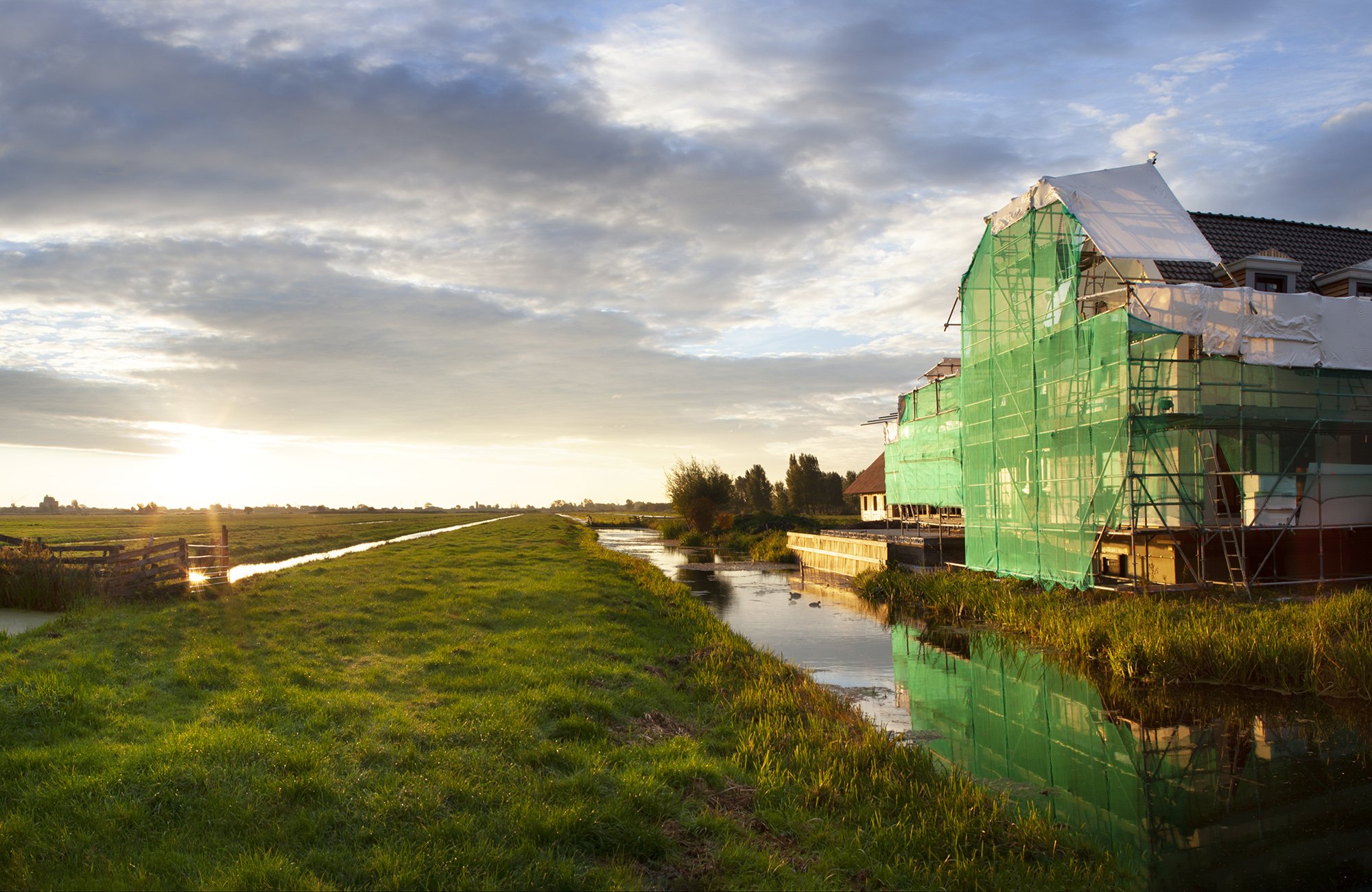European platforms
Within Europe, discussions on circularity, (the determination methods of) the environmental performance of structures, (construction) products, building installations, etc. and the way they are declared are taking place on various platforms. The discussions contribute to achieving uniformity in the determination methods regarding the characteristics of construction works and the products incorporated in them. Member States are free to impose limit values on them.

There are three dominant venues/platforms where that discussion is taking place:
- EU Circular Action Plan - for a cleaner and more competitive Europe
- EU project LEVEL(s) The European framework for sustainable buildings
- EU communication ' A renovation wave for Europe - greener buildings, more jobs, higher quality of life'
1. EU Circular Action Plan – for a cleaner and more competitive Europe
The Action Plan contains a series of cohesive initiatives to realise a strong and coherent product policy framework so that sustainable products, services and business models become the norm and consumption patterns change to avoid waste production in advance. Measures are also being taken to reduce waste and to ensure that the EU has a well-functioning market for high-quality secondary raw materials.
The construction sector is designated as a priority chain in the Action Plan. The Commission is launching a new and extensive strategy for a sustainable built environment with the aim of increasing material efficiency and reducing climate impacts. This strategy will ensure cohesion between the relevant policy areas including climate, energy efficiency and efficient use of resources, management of construction and demolition waste, accessibility, digitalisation and skills. More specifically, the Commission aims to stimulate circularity principles throughout the life cycle of buildings through:
addressing the sustainability performance of construction products in the context of the revision of the Construction Product Regulation. In this case, this means a detailing of BWR 7, including the possible introduction of minimum recycled content requirements for certain construction products
stimulating the use of circular economy principles in building design and developing digital logbooks for buildings
using the EU project LEVEL(s), the European framework for sustainable buildings, particularly for sustainable procurement of buildings and civil engineering structures;
considering a revision of material recovery targets set in EU legislation for construction and demolition waste and its material-specific fractions
promoting initiatives to reduce soil sealing, rehabilitate abandoned or contaminated brownfield sites and increase the safe, sustainable and circular use of excavated soils.
The ‘Renovation Wave’ initiative announced in the European Green Deal, which should result in significant energy efficiency improvements in the EU, will also be implemented in line with circular economy principles, will notably optimise lifecycle performance and improve life expectancy of construction assets.
2. EU project LEVEL(s) – the European framework for sustainable buildings
The JRC (Joint Research Centre) has been working to establish a framework of core indicators for sustainable construction since 2015. The JRC research interacts with the European Commission’s Communication ‘Resource Efficiency in the Construction Sector’ dated 1 July 2014, in which two main tracks are mentioned:
- Developing a joint approach for assessing the environmental performance of buildings and products
- Improving the functioning of the market for recycled materials.
The study led to the launch of LEVEL(s), a voluntary reporting framework to improve sustainability of buildings. The framework is designed in such a way that each indicator can be linked to priorities for sustainability at European level.
The framework provides indicators at the level of a building. The materials and installations that should be taken into consideration are in line with the description in EN 15978. This is very similar in content to the Environmental Performance Assessment Method for Construction Works, which indicates the methodical requirements for assessing construction and other products, installations and processes.
This is in accordance with the 2012 Building Decree vision, in which installations form part of the structure and are expressed explicitly in the definition of an ‘installation’: a non-constructional facility necessary for the operation of a structure or part thereof.
The indicators ‘Greenhouse gas emissions along a building’s life cycle’ and ‘Resource efficient and circular material in life cycles’ are important for this file.
The ‘Measuring circularity – working agreements for circular construction’ guide (NL)
[Platform CB’23] includes a table presenting the relationship between the core method and core indicators of LEVEL(s).
The table shows which topics are covered by the Level(s) framework in terms of environmental impact.
3. EU communication ‘A renovation wave for Europe – greening our buildings, creating jobs, improving lives’
The European Commission states in this communication that Europe needs an urgent focus on the following core principles:
- Energy efficiency first
- Affordability
- Decarbonisation and integration of renewables
- Life-cycle thinking and circularity
- High health and environmental standards
- Tackling the twin challenges of the green and digital transitions together
- Respect for aesthetics and architectural quality
The Commission is promoting the ecological sustainability of construction solutions and materials, such as wood and bio-based materials, nature-based solutions and recycled materials based on a comprehensive life-cycle assessment. And will:
- address the sustainability performance of construction products in the context of its revision of the Construction Product Regulation [fundamentele eis BWR 7] develop a roadmap by 2023 to reduce the whole life-cycle carbon emissions in buildings by 2050
- accelerate the cooperation with standardisation organisations on climate resistance standards for building
- review the recovery targets set in EU legislation for construction and demolition waste by end 2024
- take measures to increase reuse and recycling platforms and support a well-functioning internal market for secondary raw materials
Subscribe to our Newsletter
Sign up now and receive our newsletter (in Dutch) 10 times a year!
